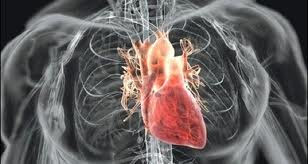Brugada syndrome is a disorder of potentially life-threatening heart rhythm. This syndrome is characterized by an abnormal heart rate and the special called Brugada sign, which can only be detected by an electrocardiogram test. Brugada syndrome is much more common in men than in women. The disease is rarely diagnosed in children.
 |
| illustration Brugada syndrome |
The cause of Brugada syndrome
Brugada syndrome is caused by disorders of the heart. Each heartbeat is triggered by electrical impulses produced by specialized cells in the upper right chamber of your heart. This syndrome causes the heart does not pump effectively. As a result, not enough blood circulating throughout the body. Brugada syndrome is usually inherited, but can also occur due to structural abnormalities in your liver, an imbalance in chemicals that help transmit electrical signals through your body, the effects of certain prescription drugs or cocaine use.
Brugada Syndrome Symptoms
The most important signs or symptoms of Brugada syndrome is an abnormal pattern on the electrocardiogram (ECG) called Brugada sign. Brugada sign is a heart rate patterns were found on tests of your heart rhythm (electrocardiogram, or EKG). You can not feel the signs of Brugada ECG but detected. But some people who suffer from Brugada syndrome also show signs as follows:
- Irregular heartbeat
- Sudden cardiac arrest
- Fainting
Brugada syndrome Treatment
Brugada syndrome treatment usually uses a medical device called a cardioverter defibrillator. The device is mounted cardiac abnormalities in patients at risk of sudden cardiac death. The small device continuously monitors your heart rhythm and deliver electrical shocks when needed to control abnormal heart rhythms. The procedure for implanting cardioverter defibrillators require hospitalization for one to two days. Sources: Mayoclinic
0 Response to "Brugada Syndrome"
Post a Comment